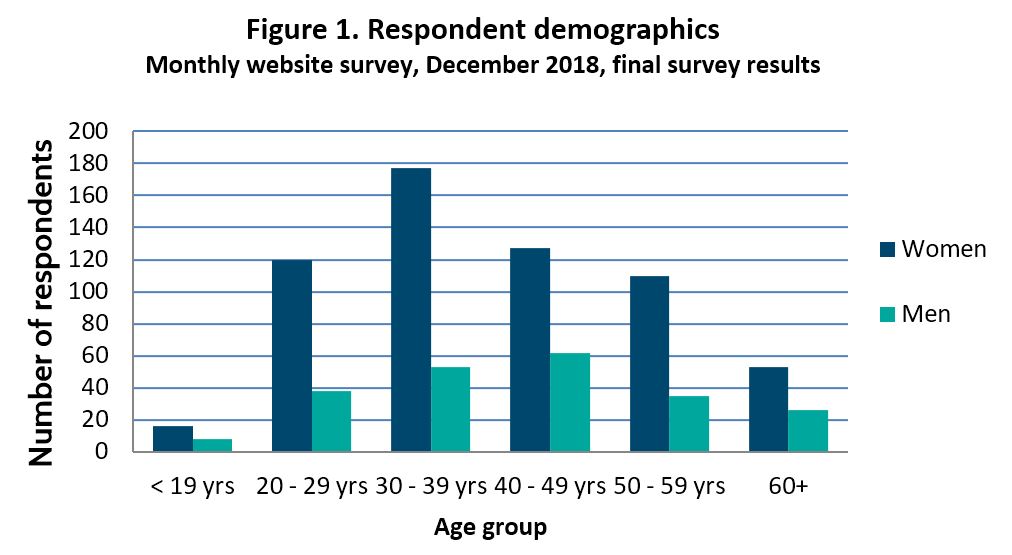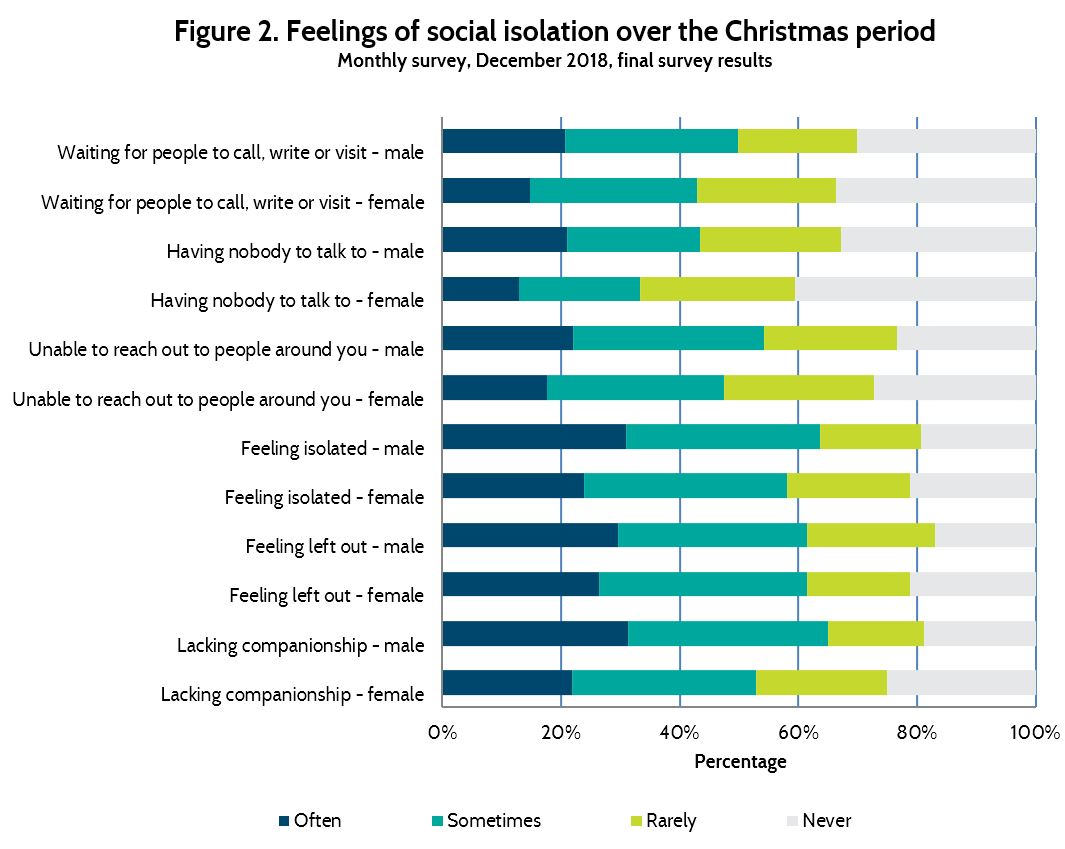Introduction
Would you like to be notified when a new survey report is released? Sign up here
Relationships Australia’s previous online surveys have identified the Christmas period as a time of increased stress for people and families. These findings are consistent with other published studies that indicate high levels of family conflict, anxiety, depression and loneliness at Christmas time. In 2016, one-third of respondents to our monthly survey reported that their family relationships at Christmas time were significantly negatively affected by work-life pressures and financial stress. In 2015, 12 per cent of men and women reported that their family relationships were affected to a large extent by increased conflict, while a further one-third of men and women reported that their family relationships were affected, at least, to a small extent by increased conflict between family members over the Christmas period.
Family relationship problems can lead to increased social isolation and reduced wellbeing at any time, but conflict may be exacerbated by family and societal rituals and expectations relating to Christmas. Research commissioned by the Salvation Army, for example, found more than two million people experiencing social isolation at Christmas, with one in four Australian adults experiencing anxiety and three million suffering depression (Salvation Army, 2018).
Social isolation has been associated with a range of other poor mental, physical and socio‑economic outcomes, including low self-esteem, suicide, heart disease and poor physical health, with the impact of social isolation estimated to be equivalent to smoking 15 cigarettes a day (Valtorta, 2016). Associations between poor family relationships, poor wellbeing and nationally celebrated events and holidays are increasingly gaining interest from policy-makers who seek to identify and respond to the risks of increased vulnerability.
Relationships Australia’s December 2018 online survey sought to further understand family relationship stress and social isolation being experienced by visitors to our website during the Christmas period.
Previous research finds that…
- Holiday stress has been found to have a greater impact on lower middle income individuals. This group feels the weight of stress from work plus the seasonal rush to find time to get everything done. In addition, their worries about money are heightened by the commercialism of the season and the pressure to spend a lot of money (Bertold & Greenberg, 2006).
- In a study of patients with a history of self-harm and partner relationship problems, patients showed a decrease in self harm 3 days before Christmas Day and an increase on New Year’s Day (Bergen & Hawton, 2007). meal
- Specific behaviours that have been found to ameliorate loneliness for older people include utilising friends and family as sources of emotional connection and support, engaging in mealtime rituals as a means of maintaining social contacts, and spending time constructively by reading and gardening (Pettigrew & Roberts, 2008)
Results
More than 860 people responded to the Relationships Australia online survey in December 2018. Just under 75 per cent of survey respondents (73%) identified as female, with more females than males responding in every age group (figure 1). Eighty-seven per cent of survey respondents were aged between 20‑59 years, and more than 50 per cent of respondents comprised women aged between 30-49 years (inclusive).
As for previous surveys, the demographic profile of survey respondents remains consistent with our experience of the groups of people that would be accessing the Relationships Australia website.

There were no significant differences in the reports of men and women when they were asked about their experience of social isolation over the Christmas period.
Twenty-four per cent of survey respondents reported they often lacked companionship, while a further 32 per cent reported they sometimes lacked companionship over the Christmas period.
More than one-quarter of survey respondents reported they often felt left out or isolated over the Christmas period, while a further 34 per cent reported they sometimes felt left out or isolated. One-fifth of survey respondents often felt unable to reach out to people around them (19%) or had no one to talk to (15%), while a further one-third (34%) of respondents sometimes had no one to reach out or talk to over the Christmas period.
Sixteen per cent of survey respondents reported they often spent time waiting for people to call, write or visit, while a further 28 per cent reported they sometimes waited for people to call, write or visit over the Christmas period (figure 2).

References
Bergen, H. & Hawton, K. (2007). Variation in deliberate self-harm around. Christmas and New Year. Social Science & Medicine 65, 855–867.
Berktold, J. & Greenberg, A, (2006). Holiday stress. Available at https://www.apa.org/news/press/releases/2006/12/holiday-stress.pdf
Pettigrew, S., & Roberts, M. (2008). Addressing loneliness in later life. Aging & Mental Health, 12(3), 302-309. doi: 10.1080/13607860802121084
Salvation Army. (2018). Loneliness Survey. Available at https://thewest.com.au/news/christmas/plea-for-help-as-poverty-loneliness-affect-millions-of-australians-at-christmas-ng-b881051103z
Valtorta, N., Kanaan, M., Gilbody, S., Ronzi, S., & Hanratty, B. (2016b). Loneliness and social isolation as risk factors for coronary heart disease and stroke: systematic review and meta-analysis of longitudinal observational studies. Heart, 102(13), 1009-1016. doi:10.1136/heartjnl-2015-308790.
